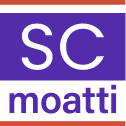This article was originally published on Abovethelaw.com on May 31, 2017.
SC Moatti is a technology visionary, a VC investor, and the bestselling author of Mobilized: An Insider’s Guide to the Business and Future of Connected Technology. She also serves on boards of directors for both public and private companies, including mobile technology giant Opera Software (OPERA:Oslo). Moatti started her career as a product professional before becoming an executive at mobile pioneers like Facebook, Trulia and Nokia.
When she decided she wanted to transition from the C-suite to the boardroom, her strategy was rooted in her prior business development experiences (which included launching and monetizing mobile products that are now used by billions of people and have received prestigious awards, including an Emmy nomination).
She viewed herself as a product that needs to appeal to a certain market where perfect fit is the ultimate key: board appointment committees. Whether your goal is to shift from being an in-house counsel to a GC, from GC to a C-level executive, or to become a board member — you will need to work hard and strategically reinvent yourself.
Moatti argues, “Re-inventing ourselves as many 17 times or even more throughout our career is an essential professional skill to thrive in the ever-changing social, political, and technological landscape.” She adds, “In fact, if a professional fails to do that, she will reach the middle career plateau within two to five years.”
Moatti approach to re-inventing herself includes creating a three-step framework.
Step 1: Join the conversation
“When I started on this journey, I decided to curate news or tweet something every day, speak once a month, and write a blog entry once a month,” shares Moatti. “I started very small.” Of course, this required an effort on top of her already loaded professional schedule. “Every day I was looking for something good to retweet,” she says. “And it is surprisingly hard to find high-quality writing that adds to the conversation in the sea of mediocre Internet writing. Doing so forced me to read and stay current.” Writing was also initially challenging for Moatti. “Writing relatively good, well-researched material takes time. And then there’s validating, editing, and placing your work in a respectable publication. All of this requires an effort and is not simple,” she explains.
Moatti explains, “The first step is to join the conversation of a function or industry. This requires a little more than just doing your job well.” She recommends doing some combination of the following: chairing or hosting events, hosting speakers, sharing curated content on social media, blogging, or speaking. “This will most certainly connect you with interesting people that you did not know before,” says Moatti.
The effort paid off, however, and launched Moatti as a key participant in her industry. Soon enough, she found herself on numerous tech panels and included in new conversations. According to Moatti, the opportunity for expedited learning is the greatest reward of going through this conversation-joining process. “It also improved my research skills, my ability to think critically, and my ability to stay current with the developments in my field and business in general,” Moatti adds.
Step 2: Proactively engage
After a while, Moatti was able to do a little more. She started actively commenting on articles written by industry leaders, moderating discussions, and expressing her opinions on Twitter. “It felt only natural to start actively participating in the conversation that I joined,” she explains. “Why else would I join, if not to participate?”
Moatti recommends having content-based discussions in your industry or function and being more proactive in seeking interesting opportunities. “In addition to my existing goals, I actively reached out to event organizers to moderate panels. I also contacted blogs to publish my opinions,” Moatti says. She also developed her own perspectives and began eagerly sharing them on Twitter, instead of merely retweeting the thoughts of others. This helped her grow and gain prominence as an industry leader.
Step 3: Become a thought leader
Eventually, Moatti and her positions became well known in her industry. “I decided to become best in class in my line of business,” she explains. “I realized that I have significant views about product development and that writing articles and opinion pieces didn’t provide enough space to express the breadth and depth of my thoughts.” Moatti realized she was no longer satisfied with simply participating in industry conversation. “I wanted to drive my discipline in a certain direction,” she says. So, when the opportunity to write a book came up, Moatti eagerly took it.
“Writing a book is a whole different endeavor,” says Moatti. “It is complex, time-consuming, and difficult.” Moatti wrote the manuscript over the summer and published it a year after she signed a contract with a publisher. “It was my summer project, and I loved it!” she says. “Putting words on paper in long form helped me to refine my thoughts, to take bolder and more substantiated stands.”
Moatti also regularly leads keynote addresses at industry conferences. “Panels are largely reactive,” Moatti explains. “When you give a keynote speech, the bar is much, much higher. You need to really capture the attention of your audience and meet its needs; it is a performance. You need to be funny, memorable, relevant, current, and entertaining.”

